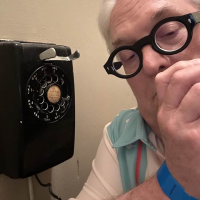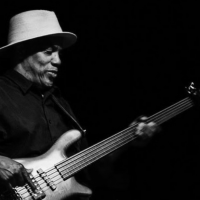Home » Jazz Musicians » Bob Dylan
Bob Dylan
Who would ever imagine recordings by Billie Holiday, the Clash, the Sons of the Pioneers, Aretha Franklin, Charles Mingus and the White Stripes all on the same album?
If the mixture of jazz, punk, country-western, soul and rock sounds radical in an era of rigid musical segregation on commercial radio, it's only fitting that we have a genuine musical revolutionary to thank for the new package: Bob Dylan.
In his role as DJ on satellite radio broadcaster XM for nearly two years, Dylan has been playing a mixture of these sounds. The problem is you can't hear the show unless you subscribe to XM.
Ace Records, the imaginative reissue label in England, has come up with the next best thing. "Theme Time Radio Hour With Your Host Bob Dylan," a two-disc set available as an import in the U.S., contains 50 of the most colorful records played on the show.
In his introduction to the set, Gavin Martin quotes Dylan about the marvelous range of musical styles brought together on the show: "I never understood no border patrol when it comes to music." The Ace package illustrates the wisdom of his thinking. It's easily one of the most entertaining and, even, illuminating historical music packages in ages.
"Theme Time" is a weekly radio show with the records chosen to fit a particular theme — "mother," "baseball" and "tears" are some of them — with Dylan playing and commenting on the various tunes.
Bob Dylan is the pre-eminent poet/lyricist and songwriter of his time. He re-energized the folk-music genre, brought a new lyrical depth to rock and roll when he went electric, and bridged the worlds of rock and country by recording in Nashville. As much as he’s played the role of renegade throughout his career, Dylan has also kept the rock and roll community mindful of its roots by returning often to them.
With his songs, Dylan has provided a running commentary on a restless age. His biting, imagistic and often cryptic lyrics served to capture and define the mood of a generation. For this, he’s been elevated to the role of spokesmen - and yet the elusive and reclusive Dylan won’t even admit to being a poet. “I don’t call myself a poet because I don’t like the word,” he has said.
“I’m a trapeze artist.” Bob Dylan was born Robert Zimmerman on May, 24th, 1941, in Duluth, Minnesota. He learned to play harmonica and piano by age ten and taught himself to play the guitar. As a high-school student in the late Fifties, he listened to Hank Williams and Little Richard and learned how to play rock and roll.
Read moreTags
Ronnie Wood: Fearless: The Anthology 1965-2025
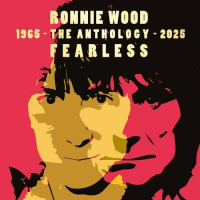
by Doug Collette
If the Ronnie Wood anthology Fearless proves anything, it is that the predominant virtues of the peripatetic British musician are largely intangible. Not that the guitarist, songwriter and singer is not talented in those various roles, but that his most salient attributes, at least as depicted here, as those of a convivial individual who invariably contributes to a nurturing atmosphere in a musical setting. Above all, the man known as 'Woody' serves the songs as well as his ...
Continue ReadingBob Dylan: A Complete Unknown

by Doug Collette
Bob Dylan A Complete Unknown Searchlight Pictures2024 As with so many artistic efforts related to Bob Dylan, James Mangold's biopic A Complete Unknown may work best simply as the means to an end (and not just as inspiration to revisit the Nobel Prize winner's music). The film certainly benefits from not being taken too seriously, especially as it hardly pretends to be definitive, even in the designated 1961-1965 timeline of the screenplay by the ...
Continue ReadingBob Dylan: Mixing Up The Medicine - Treasures From the Bob Dylan Center

by Doug Collette
Bob Dylan: Mixing Up The Medicine Mark Davidson and Parker Fishel 608 pages ISBN: # 978-1734537796 Callaway Arts & Entertainment2023 There have been more than a few books written about Bob Dylan during the course of his sixty-plus years in the public spotlight, but perhaps none is so dense as Mark Davidson and Parker Fishel's Mixing Up the Medicine. Granted, the Nobel Laureate's own tome, The Philosophy of Modern Song (Simon & Shuster, ...
Continue ReadingBob Dylan: Fragments - Time Out of Mind Sessions (1996-1997): The Bootleg Series, Vol. 17

by Mike Jurkovic
Dylanologists of every stripe and level of Dylanalia had it partly right when Bob Dylan released Time Out Of Mind (Columbia) in mid-September 1997. “Great album!" They/we/us all screamed. “Great songs!" “Dylan's best since the totemic Blood On the Tracks!" (Columbia, 1975) “Mid-career masterwork!" “The Bard's New Relevance!" If you weren't there the first time it really was a Category 5 idiot wind of biblical proportion. In the chalk dust arena of popular punditry, the second enfant ...
Continue ReadingBob Dylan: The Philosophy of Modern Song

by Doug Collette
The Philosophy of Modern Song Bob Dylan 352 Pages ISBN: # 978-1451648706 Simon & Schuster 2022 Bob Dylan's The Philosophy of Modern Song is a labor of love by a music lover of unremitting passion. As such, it is hard to put it down once the reading commences, if for no other reason than proceeding through the sixty-some essays provides a rush similar to that of poring through Jack Kerouac's On The ...
Continue ReadingBob Dylan: Springtime in New York 1980-1985: The Bootleg Series, Volume 16 (5CD)

by Doug Collette
Generally speaking, revelations abound within the various installments of The Bootleg Series, Bob Dylan's ongoing archive initiative, and Volume 16 is no exception. But in listening to Springtime in New York, 1980- 1985, the epiphanies come in slow bursts, flashing over the course of the five CDs to generate a cumulative momentum that reaches a flash-point with the content taken from the much-maligned Empire Burlesque (Columbia, 1985). And that outcome in itself is a truly Dylanesque curve ball: pre-release anticipation ...
Continue ReadingSurviving in a Ruthless World: Bob Dylan's Voyage to Infidels

by Doug Collette
Surviving in a Ruthless World: Bob Dylan's Voyage to Infidels Terry Gans 256 pages ISBN: # ISBN-13 : 978-1912733392 Red Planet Books 2020 Terry Gans' Surviving in a Ruthless World: Bob Dylan's Voyage to Infidels is an in-depth examination of Bob Dylan's Infidels (Columbia, 1983) album, the title of the book taken from the original name for the album. The author covers the gestation of the record all the way from the Nobel ...
Continue ReadingWatch Trailer For Bob Dylan’s ‘Rolling Thunder Revue’ Martin Scorsese Netflix Doc

Source:
HypeBot
“It wasn’t a success, not if you measure success in terms of profit,” Bob Dylan says of the 1975 Rolling Thunder Review tour in his first on-camera interview in over a decade. The Martin Scorsese produced documentary will be released ion Netflix and in select theaters on June 12th. According to Netflix “Setting out across a 1975 America exhausted politically, economically and socially, a busload of musicians—assembled by Bob Dylan—hits the road in search of new creative horizons. The resulting ...
read more
Geography Of Music: Tulsa, Oklahoma

Source:
HypeBot
While not place necessarily associated with pop culture preservation, the University of Tulsa is teaming with a philanthropist to make the city home to an archive of documents and objects belonging to Bob Dylan and others. Guest post by William Glanz of SoundExchange Bob Dylan will remain in Tulsa forever. That’s because philanthropist George Kaiser teamed up with the University of Tulsa this year to purchase thousands of documents and objects belonging to Bob Dylan. Bob Dylan and Joan Baez ...
read more
Bob Dylan Goes Electric

Source:
JazzWax by Marc Myers
As I write in today's Wall Street Journal (go here), a decision made by Bob Dylan 50 years ago this week altered the direction of rock and jazz. On the night of July 25, 1965, Dylan performed at the Newport Folk Festival on a Fender Stratocaster electric guitar. He was backed by Mike Bloomfield on electric guitar, Al Kooper on organ, two members of the Paul Butterfield Blues Band—electric bassist Jerome Arnold and drummer Sam Lay—and Barry Goldberg on piano. ...
read more
Club 47 Folk Revival Documentary Exploring The History Of The Cambridge Folk Music Scene From 1958-1968 To Headline Ohio Independent Film Fest

Source:
1888 Media
Cleveland, OH: A new documentary celebrating the roots of the Cambridge, Massachusetts folk music scene recently premiered before a sold-out crowd at the Boston International Film Festival and is now set to feature as the headlining film for the Ohio Independent Film Festival with a screening at The Beachland Ballroom on Sunday May 20, 2012 at 7:30 PM local time. FOR THE LOVE OF THE MUSIC: THE CLUB 47 FOLK REVIVAL centers around Club 47, the iconic Harvard Square coffeehouse, ...
read more
For The Love Of The Music: The Club 47 Folk Revival Documentary

Source:
1888 Media
New Documentary Exploring the History of The Cambridge Folk Music Scene From 1958-1968 To Premiere At Boston International Film Fest Features Interviews With Joan Baez, Tom Rush, Taj Mahal, Judy Collins, Maria Muldaur, Geoff Muldaur, Jim Kweskin, Jackie Washington, Jim Rooney and Peter Rowan Includes Audio Of Two Unreleased Bob Dylan Performances, “Talkin’ World War 3 Blues” and “With God on Our Side” And A Dylan With Eric von Schmidt Version Of “Glory, Glory” Boston, MA: A new documentary celebrating ...
read more
Shows I'll Never Forget: Bob Dylan, April 21, 1993

Source:
Something Else!
On this night, Bob Dylan once again proved he was no fan of history. And that's why I've been a fan of his for so long.
See, I've always loved the in-concert head fake. After all, I already own the albums. Alas, showgoers in the modern age want the hits, and they want them note for teeth-splinteringly boring note. My response: You could hardly blame someone for not wanting to play a 25-year-old song the same old way. (In fact, ...
read more
Bob Dylan Archive Collection

Source:
JamBase
BOB DYLAN “ARCHIVE" COLLECTION BY BOX OF VISION TO BE RELEASED Box Of Vision are pleased to announce the Bob Dylan Archive; an officially licensed triple book collection. Beautifully packaged in a luxurious, linen-covered showcase box, the Archive is comprised of: The Storage Book, which gives fans the ability to store and organise their existing Bob Dylan CD catalogue and memorabilia. The Storage Book is specifically designed to hold all 43 of Dylan's CD albums, it has additional room for ...
read more
Bob Dylan: In Concert: Brandeis University 1963

Source:
JamBase
AVAILABLE ON DIGITAL, CD, AND VINYL FORMATS TUESDAY, APRIL 12 Columbia Records and Legacy Recordings have announced the first stand-alone release of Bob Dylan In Concert—Brandeis University 1963, available on digital, CD and vinyl formats everywhere on Tuesday, April 12, 2011. Pre-sale information for Bob Dylan In Concert—Brandeis University 1963 may be found via BobDylan.com and Facebook. A previously unknown live recording of a 21-year-old Bob Dylan taped at the Brandeis First Annual Folk Festival in Waltham, Massachusetts on May ...
read more



















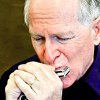
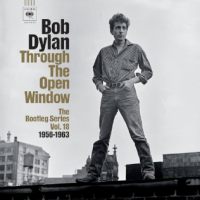








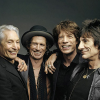




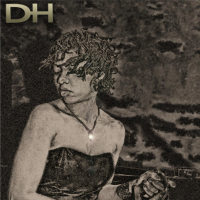


_with_Skip_Mcdonald_(Right)_23_n.jpg)

